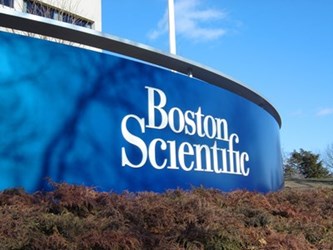Boston Scientific Touts Favorable Watchman Data
By Jof Enriquez,
Follow me on Twitter @jofenriq

Boston Scientific presented positive results from an international, real-world registry about its Watchman left atrial appendage (LAA) closure device for stroke prevention during the American Heart Association Scientific Sessions held recently in Orlando, Fla.
Periprocedural data from the Registry on WATCHMAN Outcomes in Real-Life Utilization (EWOLUTION) of 1,021 patients with atrial fibrillation showed that the Watchman device was successfully implanted in 98.5 percent of patients, according to Healio. This rate is higher than previous clinical studies for Watchman, PROTECT-AF, PREVAIL, and CAP registry. EWOLUTION participants were at higher risk for stroke and bleeding compared to the population covered in the other studies.
The EWOLUTION trial recorded a 0.8 percent mortality rate and 84 serious adverse events at 30 days. The seven-day rate of serious adverse events related to the device or procedure was 2.8 percent, lower than the 8.7 percent rate for PROTECT-AF, the 4.2 percent rate for PREVAIL, and the 4.1 percent rate for CAP, per Healio.
“The EWOLUTION real-world prospective registry has the highest [LAA] closure success rate of all Watchman studies so far, with the lowest periprocedural risks, even in patients with multi-comorbid states, high stroke and bleeding risk, and many of the [patients] unsuitable for oral anticoagulation,” explained Lucas Boersma, MD, PhD, FESC, from St. Antonius Hospital, Nieuwegein, Netherlands, according to the report. “These data show that improvement in implantation techniques may further boost the net clinical benefit of LAA closure technology during long-term follow-up.”
Boston Scientific will continue the EWOLUTION trial and monitor patients for two years to record longer-term, post-implantation outcomes. Longer follow-up times could yield greater statistical certainty on the cost-effectiveness of the Watchman device, according to James Freeman, MD, MPH, of Yale University (New Haven, CT), in a report from TCTMD.com. Freeman – who compared the larger and longer PROTECT AF trial (mean 3.8 years) to the shorter (18 months) PREVAIL data – said that better evaluation of the Watchman device in real-world settings in the coming years is important, and will come in postmarketing studies mandated by the FDA and set up through the National Cardiovascular Data Registry (NCDR).
Watchman suffered through delays in the FDA approval process because of concerns over safety risks, such as bleeding. About 40 percent of the adverse events reported during the EWOLUTION study were device or procedure-related, the most common of which were major bleeding and vascular damage at the puncture site. Boston Scientific continues to address risk for bleeding, and recently issued a field correction for Watchman.
"Cross-threading of the hemostasis valve may occur if it is tightened with the dilator in place, possibly preventing subsequent sealing of the valve when desired. This Field Correction reinforces the Directions for Use (DFU) and gives further guidance on correct use of the hemostasis valve to avoid cross-threading and to securely seal the valve, minimizing potential for undesired blood leakage," stated FDA.
Boston Scientific is counting on new products such as the Watchman to drive future growth, especially as enthusiasm has grown for the use of LAA closure devices in the treatment of atrial fibrillation since FDA approved Watchman earlier this year.
Prospects in this device segment have been tempered, though, with the recent proposed decision by the Centers for Medicare & Medicaid Services (CMS) to deny coverage for the device for use by patients undergoing warfarin anti-coagulation treatment – the opposite of what FDA approved the device for, and the make-up of the study population in all Watchman trials, who were eligible for warfarin treatment. The CMS proposal is bound to be challenged by Boston Scientific and other manufacturers of LAA devices, but they need to convince CMS with longer-term outcomes data to support reimbursement.
